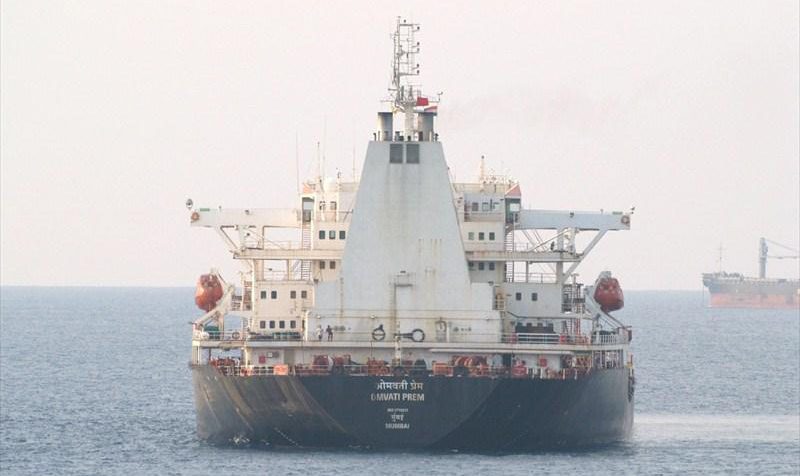 |
| John Fredriksen and daughter Kathrine Fredriksen was over 1 billion richer in the past week [1Norwegian Krone equals 0.17 US Dollar] |


Over the past two years the changing tide of the industry
has caused a collapse in crude freight rates. The Baltic Dirty Tanker Index,
which measures the cost to move oil across the sea, has sunk to around 638
recently from 1,077 in January 2010, even as the global economy has improved.
At the same time, the global tanker fleet hasn't adjusted to
the reduced haulage demand. This year, the total capacity of tankers in the
global fleet is likely to grow 4.6%, and next year tanker supply is expected to
rise 1.9%, according to a January-dated report from Clarkson Capital Markets.
That far surpasses Clarkson's projected demand growth of 2.3% for 2013 and 1.5%
for 2014.
"There is such an overhang with supply that to say that
freight rates will increase in the out years is premature
Frontline Ltd., which
operates a large fleet of very large crude tankers (VLCCs), will lose
$2.33/share this year in earnings and $2.09 next, the recent price of $1.93. Global Hunter has
an even worse view for the stock, with the price headed to 50 cents.
Nordic American Tankers Ltd., which operates a tanker fleet,
is expected to lose money this year and the next. The stock was recently
trading at $9.16.
The International Energy Agency forecasts that the US will
overtake Saudi Arabia and Russia as the world's top oil producer in seven years
and will become a net oil exporter around 2030.
U.S. crude oil exports doubled in February to a 13-year high
of 124,000 barrels per day (bpd), government data showed on April 29+, as
shipments of surplus shale crude to Canada gathered pace. Most of the exports have flowed from the
Bakken oil fields in North Dakota to plants in Canada's east, which lack
pipeline access to Alberta's oil sands and are dependent on foreign crude. The
exports have not generated significant domestic opposition, since Canada
remains a huge net exporter of oil to the United States, sending around 2.7
million bpd south from both conventional and growing tar sands production.
[April 9]
Hire rates for very large crude carriers on the benchmark voyage between Saudi Arabia and Japan slipped 0.2 percent to 31.91 industry-standard Worldscale points. Costs declined 6.3 percent April 2. Each of the ships can hold 2 million barrels of oil.
There are 87 tankers available in the gulf over the next 30 days. The global VLCC fleet’s total carrying capacity will rise 5.1 percent this year, above demand growth of 4.9 percent.
Frontline Ltd.’s shares fell to the lowest since May 1999 in March and slumped 95 percent since the end of 2007. The stock slid 1.5 percent to 12.75 kroner by the close in Oslo trading April 2.
VLCCs are losing $3,012 daily on the benchmark Saudi Arabia-to-Japan voyage, figures from the Baltic Exchange in London showed. That compared with a $29-a-day loss as of March 28.
[September 10, 2012] John Fredriksen bases his latest investments on the plunging prices of vessels rather than on economic and petroleum growth forecasts, which he says are too uncertain to be useful. At $535 million, the cost of a deep-water rig in Singapore yards is down 31 percent from its 2008 peak, and Chinese and South Korean shipbuilders are accepting new supertanker orders for about $80 million, half of what they cost at their high in 2007.
“Basically, I’m a trader,” says Fredriksen, who rarely talks to the media. “I think as we are sitting here we are very close to the bottom of the market, and I like to be a buyer at the bottom. This is the game.”
[May 28'11]The Commodity Futures Trading Commission sued two traders and the companies they worked for, Arcadia Energy (Suisse) SA and its Parnon Energy Inc. affiliate, alleging that in 2008 they amassed and sold off a substantial position in physical crude oil to "manipulate future prices." The companies are controlled by John Fredriksen's Farahead Holdings, of Cyprus.
The VTN Shipping group is actively involved in the multiple facets of chartering, ship management and ship owning.
It is a wholly owned subsidiary of Farahead Holdings Limited forming part of a group of companies which include
Frontline, SeaDrill, Arcadia Petroleum and Golar LNG Ltd.
The VTN Shipping Group has been incorporated in Cyprus since November 2006.
Vessel's name: V8 Stealth Last updated: May 20, 2011
Ex-name(s): Not Applicable IMO number: 9436018
Flag: Marshall Island Call sign: V7SW7
Port of Registry: MAJURO Summer DWT: 112871 MT
Type of vessel: Oil Tanker Built: Nov 23, 2009
Type of hull: Double Hull Owner: MAYHEM CRUDE Inc
Class Society: American Bureau of Shipping Operator: NAVIG8 SHIPMANAGEMENT PTE LTD
more

Kathrine Fredriksen is a board member of oil trading company Arcadia Petroleum












